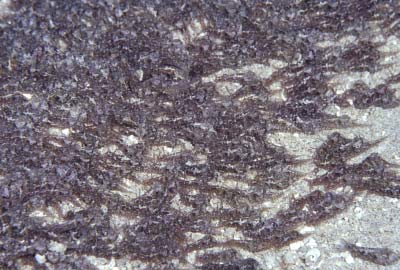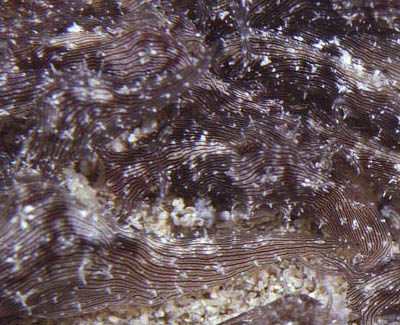Swarming in Stylocheilus striata
April 7, 2002
From: John Hoover


Dear Bill,
You question whether Sea Hares swarm. I can't think of any other term to describe what the Stylocheilus striata in the two attached photos are doing. This phenomenon is not uncommon at one location where I dive from time to time off the leeward side of Oahu, where virtual rivers of these slugs -- sometimes 30 ft. long -- travel head-to-tail along silty sand at depths of about 50 ft. The same phenomenon was mentioned years ago in the newsletter Hawaiian Shell News, so I know I'm not the only one to have noticed. However, the slugs look much like clumps and windrows of decaying algae and most divers probably don't recognize them for what they are.
John
hoover@hml.org
Hoover, J., 2002 (Apr 7) Swarming in Stylocheilus striata. [Message in] Sea Slug Forum. Australian Museum, Sydney. Available from http://www.seaslugforum.net/find/6681Dear John,
Thanks for these photos. I guess it is a matter of semantics. I am aware of Stylocheilus being found in large dense populations, that's why I referred Stephen to Cory Pittman's observations of large numbers of Stylocheilus drifting together in Hawaii.
The question is how or why these animals come to be together in high densities. Are they together as a behavioural phenomenon, such as migrating to a special place - like eels, or been attracted together by pheromones etc, or have they been physically washed together by water movement? Or have they have been together since they settled out of the plankton? To me, the word swarming suggests a behavioural phenomenon and my understanding of the research is that large densities of Sea Hares occur because of heavy larval settlement at a particular locality, and is accentuated by animals being washed together late in life by physical factors - waves, storms, currents - in a phenomenon which can lead to mass mortality. There is no question that they can occur in large numbers as you have illustrated. I guess the distinction I am trying to make is that dense 'crowds' of Sea Hares occur, not as the result of Sea Hare behaviour, but through a conjunction of random events - high larval settlement, good growth of food algae, good weather during growth period etc.
Hope that makes sense,
Best wishes,
Bill Rudman
Related messages
-
Stranding of Sea Hares in New South Wales
From: Brenda Harris, July 2, 2007 -
Mass Stranding of Sea Hares in nthn New South Wales
From: Belinda Allman , February 14, 2007 -
Re: Mass Stranding of Sea Hares in nthn New South Wales
From: Inger Vandyke, January 16, 2007 -
Mass Stranding of Sea Hares in nthn New South Wales
From: Michael Hill, January 15, 2007 -
Re: Mass mortality of Aplysia californica
From: Ellen Hall, September 5, 2005 -
Ebro Delta, Spain - Large Sea Hares
From: Jorge Jimenez, August 20, 2005 -
Migration inshore of Aplysia punctata
From: Dr. Stephen Hoskins, June 11, 2003 -
Bloom of Aplysia in Portugal
From: Manuel Malaquias, September 17, 2002 -
Swarming behaviour in Aplysia
From: Dr. Stephen Hoskins., April 3, 2002 -
Re: Sea Hares - mass mortality
From: Anne DuPont, September 28, 1999 -
Re: Sea Hares - mass mortality
From: Wayne Ellis, September 10, 1999 -
Sea Hares - mass mortality
From: Anne DuPont, September 9, 1999
